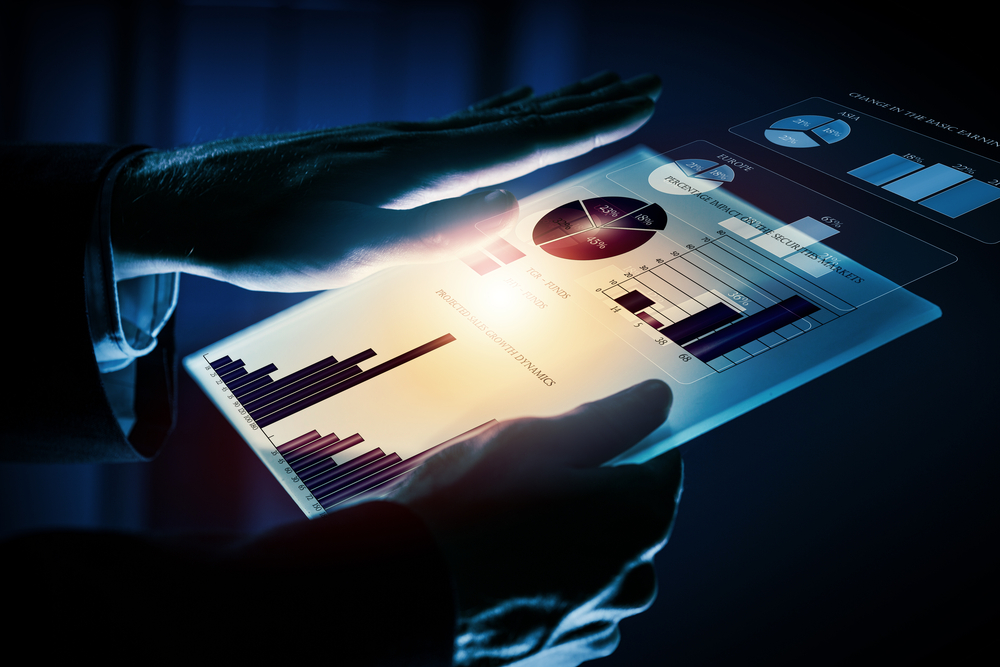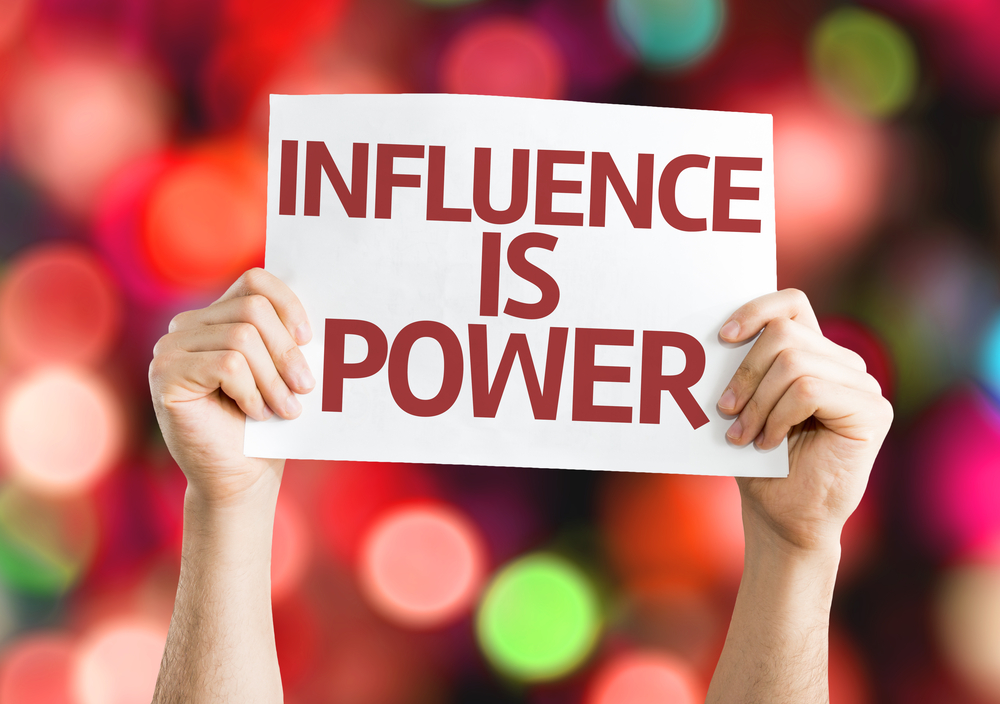
What is B2B influencer marketing, and how does it differ from B2C influencer marketing? How can B2B brands find and collaborate with the right influencers for their goals and objectives? Read on to learn the best practices and examples of B2B influencer marketing in 2024.
B2B brands can benefit from partnering with influential experts, thought leaders, and niche influencers to reach and engage with their target audiences. In fact, according to a report by TopRank Marketing, 86% of B2B brands are successful with influencer marketing, and 85% believe interest in working with influencers will increase in the next 12 months.
What is B2B Influencer Marketing
B2B influencer marketing is a strategy that leverages the power and credibility of industry experts, thought leaders, and niche influencers to reach and engage with B2B audiences. Unlike B2C influencer marketing, which often relies on celebrities and social media stars, B2B influencer marketing focuses on finding influencers with relevant knowledge, experience, and influence in a specific industry or domain.
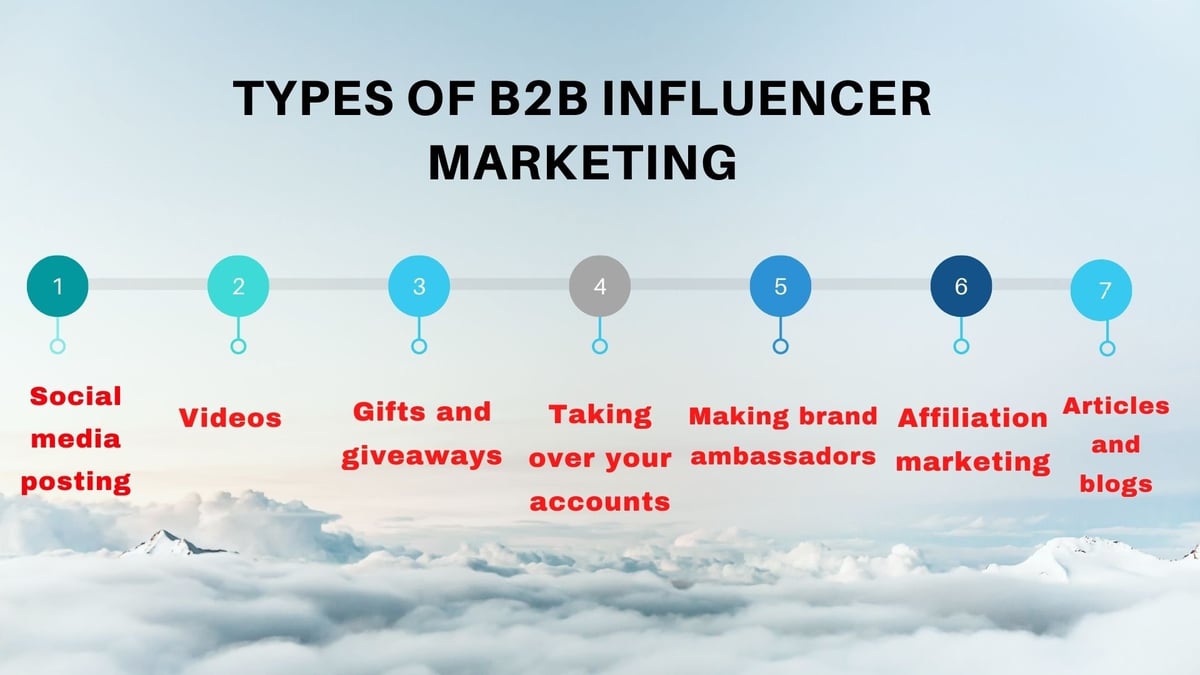
B2B influencers can help B2B brands achieve various goals, such as:
- Increasing brand awareness and reputation among target audiences
- Generating leads and conversions by providing social proof and recommendations
- Building trust and credibility by sharing valuable insights and best practices
- Driving thought leadership and innovation by co-creating content and campaigns
- Enhancing customer loyalty and retention by providing ongoing support and education.
Why is B2B Influencer Marketing Important in 2024?
B2B influencer marketing is not a new concept, but it has become more critical and practical in 2024 due to several reasons, such as:
- The increasing complexity and competitiveness of the B2B market require more research, education, and trust before making purchase decisions
- The growing influence of digital and social media, which enables B2B buyers to access more information, reviews, and opinions from peers and experts
- The changing expectations and preferences of B2B buyers, who seek more personalized, authentic, and engaging experiences from B2B brands
- The rising popularity and availability of B2B influencers, who have built loyal and engaged communities around their expertise and niche
According to a study by Mediakix, 89% of marketers believe that influencer marketing ROI is comparable to or better than other marketing channels.
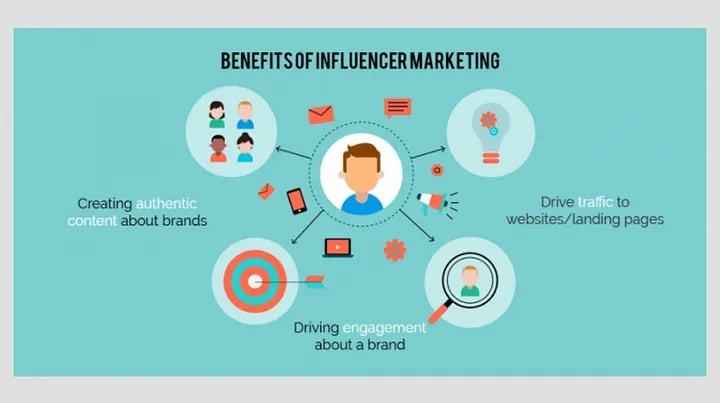
How to Implement a Successful B2B Influencer Marketing Strategy
To implement a successful B2B influencer marketing strategy, B2B brands need to follow some best practices, such as:
- Define your goals and objectives: What do you want to achieve with influencer marketing? How will you measure your success? What are your key performance indicators (KPIs)?
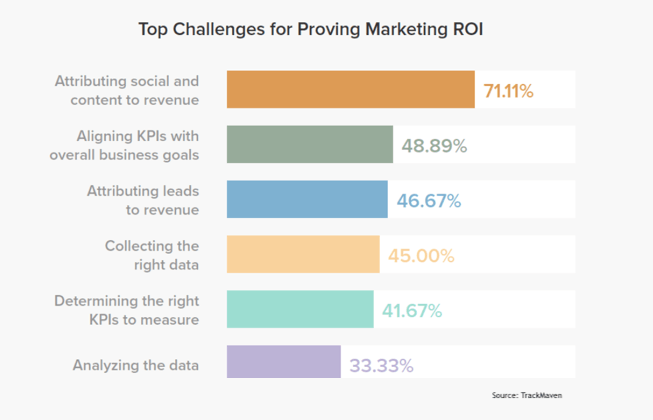
Image source: Wordstream
- Identify and select your influencers: Who can help you reach your target audience and goals? How will you find and vet them? What criteria and metrics will you use to evaluate them?
- Establish and maintain relationships: How will you approach and communicate with your influencers? What are your expectations and guidelines? How will you compensate and reward them? How will you nurture and grow your relationships over time?
- Co-create and distribute your content and campaigns: What type of content and campaigns will you co-create with your influencers? How will you align your brand message and values with your influencers’ voice and style? How will you distribute and promote your content and campaigns across different channels and platforms?
- Monitor and optimize your results: How will you track and analyze your influencer marketing performance? What tools and methods will you use to collect and report your data? How will you optimize and improve your strategy based on your feedback and insights?
In 2024, B2B influencer marketing will continue to grow and evolve as brands and influencers adopt new technologies, platforms, and tactics to create and distribute relevant and valuable content. Some of the key trends that will shape B2B influencer marketing in 2024 include:
- AI and automation tools will help influencers and brands streamline content creation, distribution, and analysis while ensuring authenticity and transparency.
- Mid-tier and micro-influencers will gain popularity, offering more niche and targeted audiences, higher engagement rates, and lower costs than macro-influencers.
- Influencer marketing will rise in prominence as a B2B tactic as more brands realize the benefits of partnering with influencers who can provide social proof, thought leadership, and education to their potential customers.
- Live shopping, video marketing, and virtual and augmented reality will play a more significant role in influencer campaigns as they offer more interactive and immersive experiences for B2B audiences.
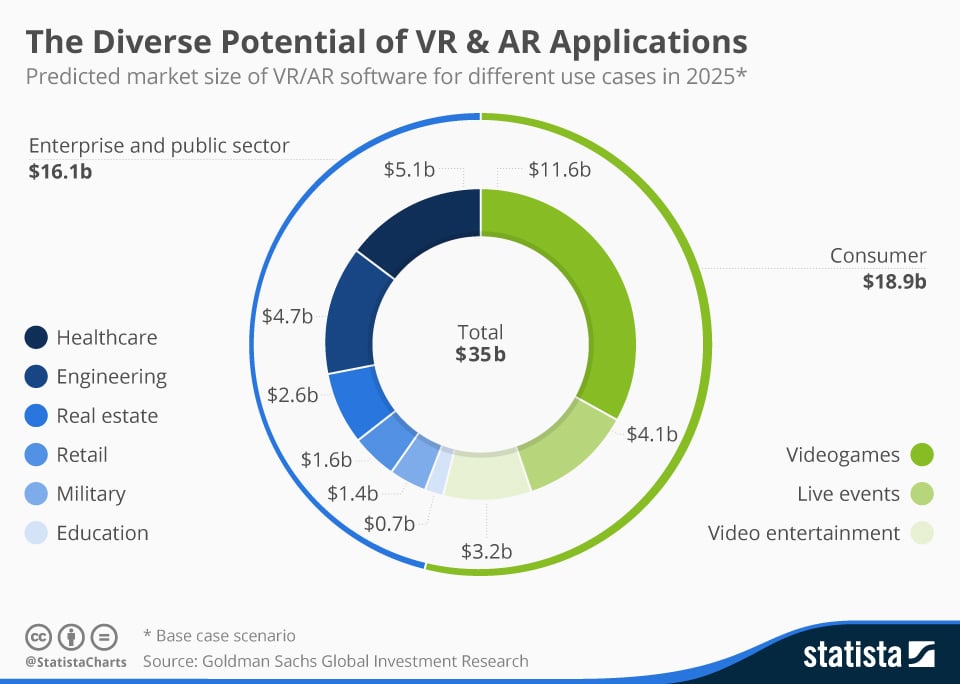
- Diversity and representation will be a priority for B2B influencer marketing as brands and influencers seek to reflect and appeal to their audiences' diverse and inclusive values.
- Long-term partnerships will replace one-off projects as brands and influencers seek to build trust, loyalty, and advocacy among their audiences.
How to Implement a Successful B2B Influencer Marketing Strategy
Now that you have your strategy set, you can start a B2B influencer marketing campaign by following these steps and using the following tools:
- Define your goals and metrics. Some common goals for B2B influencer marketing are increasing website traffic, social media engagement, email subscribers, or conversions.
- Identify your ideal influencers. You can use tools like GRIN or IZEA to find and manage influencers in your niche.
- Start building relationships. Before pitching your influencers, you must establish rapport and trust with them. Follow them on social media, like and comment on their posts, share their content, and show genuine interest in their work.
- Reach out with a personalized message. Once you have engaged with your influencers for a few weeks, you can send them a direct message or an email. Explain who you are, what your brand does, and why you think they would be a good fit for your campaign. Be clear about your expectations, deliverables, and compensation. To create engaging and relevant content for your influencers and their audiences, you can use tools like Grammarly or Hemingway. These tools help you improve your writing style, grammar, and readability and suggest keywords, headlines and calls to action.
- Negotiate and sign a contract. After agreeing to the collaboration's terms, you need to formalize it with a written contract. The contract should include the scope of work, timeline, payment, disclosure requirements, and content ownership.
- Provide guidance and support. You need to provide your influencers with the necessary information and resources to ensure a successful campaign. This may include your brand guidelines, key messages, product samples, links, hashtags, or promo codes. You also need to communicate regularly and offer feedback and assistance.
- Track and evaluate your results. After the campaign, you need to analyze its performance. You can use tools like Kapwing or Google Analytics to measure your influencer content's reach, engagement, and conversions. It would help to ask your influencers for their feedback and testimonials.
B2B Influencer Marketing ROI Measurement
B2B Influencer Marketing ROI Measurement evaluates influencer marketing campaigns' effectiveness and efficiency in achieving the desired business outcomes. It involves tracking and analyzing various metrics and indicators that reflect the impact of influencers on the target audience and the brand.
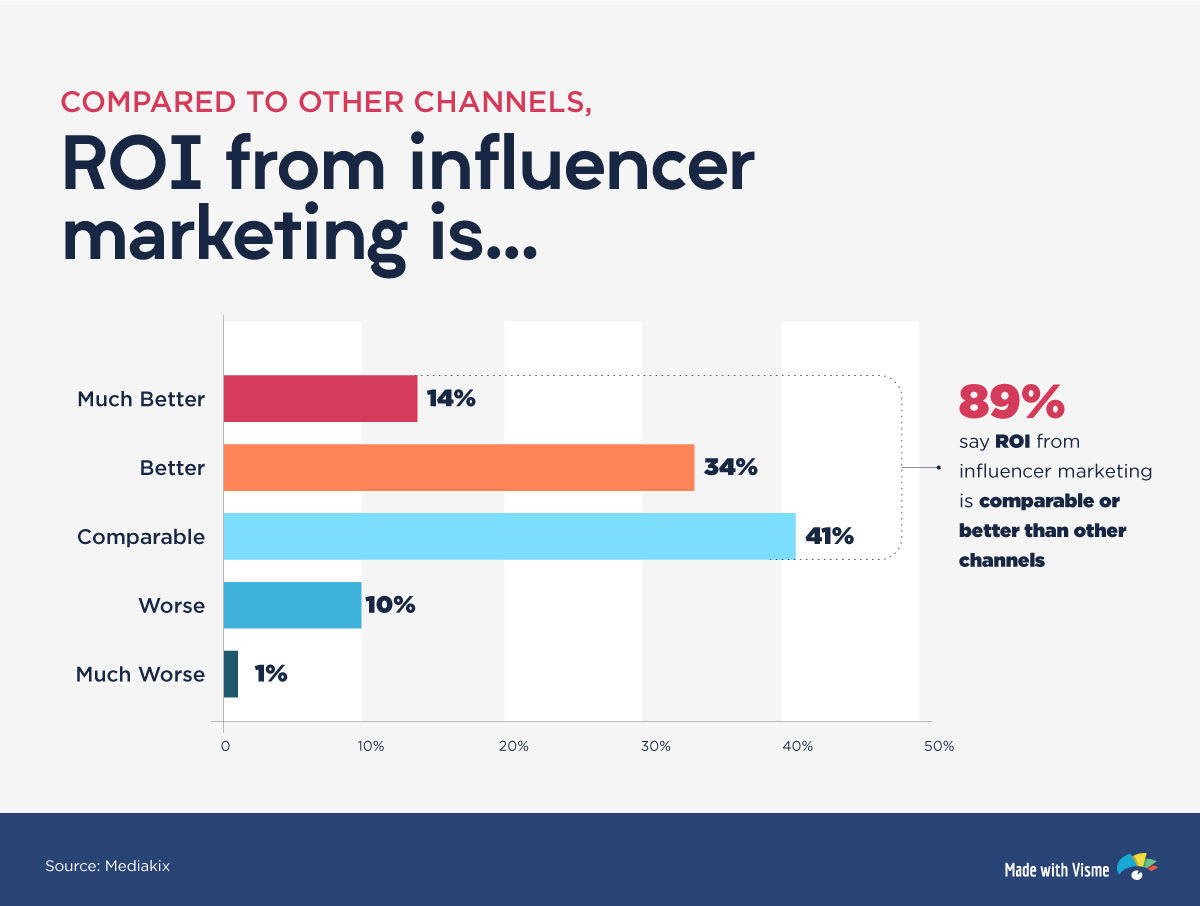
Some standard metrics and indicators are
- Impressions: The number of times the influencer’s content is displayed to the audience, regardless of whether they interact with it. It can be calculated by adding up the impressions or reach the content receives across the influencer’s social media platforms and websites.
- Reach: The potential size of the audience exposed to the influencer’s content. It can be calculated by adding the number of followers, subscribers, or visitors across the influencer’s social media platforms and websites.
- Engagement: The level of interaction and interest the influencer’s content generates among the audience. It can be calculated by adding up the number of likes, comments, shares, clicks, or views the content receives.
- Conversions: The number of desired actions the influencer’s content drives among the audience. It can be calculated by tracking the number of leads, sign-ups, downloads, trials, or purchases that the content generates.
|
Connect with the Right Influencers Gain traction and credibility with influencers who understand your market. Reach out to see how we can make it happen! |
- Revenue: The amount of money the influencer’s content contributes to the business’s bottom line. It can be calculated by multiplying the number of conversions by the average value of each conversion.
- Cost: The amount of money the business spends to collaborate with the influencer and promote the influencer’s content. It can be calculated by adding up the influencer’s fee, the product or service provided to the influencer, and the cost of the advertising or marketing campaigns featuring the influencer’s content.
One simple formula to calculate the ROI of influencer marketing campaigns is to divide the conversions' value by the campaign's cost. However, depending on the goals and objectives of the campaign, other methods and tools may be used to measure the ROI of influencer marketing, such as attribution models, social media analytics, and customer surveys.
Measuring the ROI of influencer marketing is essential for B2B brands to optimize their strategy, justify their investment, and demonstrate their value.
B2B Influencer Marketing Platforms
- Influencer discovery and selection: Users can filter and compare influencers based on industry, niche, location, audience size, engagement rate, and relevance to find the best match for their goals.
- Influencer relationship management: Users can communicate with influencers, negotiate terms, set expectations and guidelines, and track the status and progress of influencer campaigns. They can also reward and compensate influencers according to their performance and agreement.
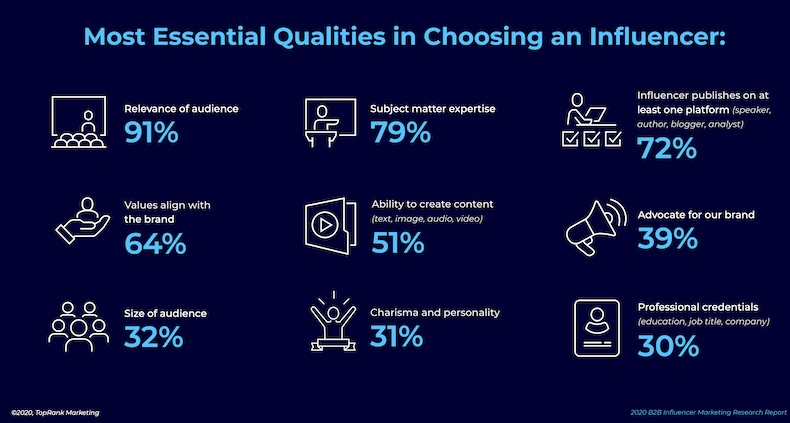
- Influencer content and campaign management: Users can co-create and approve content and campaigns with influencers, align their brand message and values with influencers’ voice and style, and distribute and promote content and campaigns across different channels and platforms.
- Influencer analytics and reporting: Users can measure and evaluate the impact and ROI of influencer campaigns using tools and methods to collect and report data on various metrics, such as reach, impressions, clicks, conversions, and revenue. They can also optimize and improve their influencer strategy based on feedback and insights.
What social media platforms can help B2B companies grow their credibility? LinkedIn, Instagram, YouTube, and X (formerly Twitter) are the most important.
LinkedIn, a professional networking platform with over 740 million users, is an excellent choice for B2B influencer marketing. With a primarily professional and decision-maker audience, it offers a targeted approach to reaching individuals with significant purchasing power. LinkedIn's key strengths include building industry relationships, positioning yourself as an expert through active engagement, and sharing impactful thought leadership content to enhance credibility.
Impressively, 80% of B2B leads originate from LinkedIn, outperforming X (formerly Twitter) (13%) and Facebook (7%). Moreover, LinkedIn lead generation forms have reduced the cost per lead for 90% of B2B marketers.
Instagram, a social media platform facilitating the sharing of photos and videos, boasts an extensive user base exceeding one billion. This makes it an exceptional choice for B2C influencer marketing. The platform predominantly attracts younger generations, positioning it as an ideal avenue for connecting millennials and Gen Z.
One notable strength of Instagram is its capacity to present your brand visually. You can artfully showcase your products or services by sharing high-quality photos and videos, creating a visually captivating representation.
YouTube
YouTube, a video-sharing platform with over two billion users, is another powerful option for B2B influencer marketing. With a diverse and global audience, it offers your brand a broad reach and exposure. YouTube’s key strengths include demonstrating your product or service in action, educating prospects with valuable tutorials or webinars, and telling engaging stories showcasing your brand personality and values.
According to a Google study, 70% of B2B buyers and researchers watch videos throughout their purchase journey, and 48% spend more than 30 minutes watching B2B videos on YouTube.
X (formerly Twitter)
A microblogging and social networking platform with over 330 million users is a valuable tool for B2B influencer marketing. With a fast-paced and conversational nature, it offers a direct and personal way to interact with your audience. X’s key strengths include creating buzz and awareness around your brand, sharing timely updates or news, and joining or hosting industry-related chats or events.
Some other examples of B2B influencer marketing platforms are Nimble, Linkfluence Radarly, Agorapulse, Zoho Social, and Talkwalker. These platforms can help B2B brands leverage the power and credibility of influencers to increase their brand awareness, generate leads, build trust, and drive conversions.
|
Is Influencer Marketing Right for Your B2B? Explore how a custom influencer strategy can fit your brand. Let’s discuss how to make it work for your business. |
B2B Influencer Marketing Examples And Case Studies
1. IBM
IBM partnered with micro-influencers who are experts in cloud computing, artificial intelligence, and blockchain to create engaging and educational content on Instagram. The influencers shared their insights and experiences with IBM’s products and services using the hashtag #IBMInfluencer. The campaign reached over 14 million people and generated over 120,000 engagements.
2. IBM Watson
Influential partnered with IBM Watson to develop an advanced AI influencer marketing platform, setting a new industry standard. Leveraging AI and machine learning, particularly IBM Watson's Personality Insights API, Influential analyzes influencers' social media content, applying the Big Five Personality traits. This approach assigns a score indicating how much an influencer or brand exhibits these traits, facilitating precise matching.
By integrating additional IBM Watson APIs, Natural Language Understanding, and Tone Analyzer, Influential achieved remarkable results. Over 200 campaigns demonstrated a 30% increase in engagement in FTC-compliant posts compared to non-sponsored content. This partnership showcased IBM Watson's AI-enhancing influencer marketing accuracy, with notable clients benefiting from the platform's success, including Hyundai, Mazda, and Kia.
3. SAP
SAP, a leading software provider, collaborated with industry influencers on LinkedIn to create a series of live video interviews, podcasts, and blog posts on digital transformation, customer experience, and innovation. The influencers shared their opinions and insights on SAP’s solutions and how they can help businesses grow and succeed. The campaign reached over 80 million people and generated over 1.5 million engagements.
Another example of SAP operations based on cooperation with influencers included partnering with 11 industry experts to create and live-stream interview-based video content of their user conference, Sapphire, reaching 80,000 online viewers and increasing website traffic and lead generation.
4. General Electric
GE, a multinational conglomerate, launched the #GEInstaWalk campaign. It invited six Instagram influencers to tour its manufacturing facilities and share photos and stories with its followers, generating over 3.5 million impressions, 200,000 engagements, and over 3,000 new followers on the GE account.
5. PricewaterhouseCoopers
PwC, a professional services firm, launched the New World. New skills. initiative, where they collaborated with LinkedIn influencers to raise awareness and spark conversations about the importance of upskilling and reskilling in the digital age, reaching over 85 million people and generating over 1.7 million engagements.
The Power of B2B Influencer Marketing
B2B influencer marketing is a powerful and effective strategy to help B2B brands achieve their goals and objectives in 2024. By partnering with the right influencers, B2B brands can increase brand awareness, generate leads, build trust, and drive conversions.
To implement a successful B2B influencer marketing strategy in 2024, B2B brands need to follow some best practices, such as defining their goals, identifying and selecting their influencers, establishing and maintaining their relationships, co-creating and distributing their content and campaigns, and monitoring and optimizing their results.
B2B brands can also learn from some examples, case studies, and trends of B2B influencer marketing in 2024 and apply them to their situations. B2B influencer marketing is not a fad but a future-proof strategy to help B2B brands stand out and succeed in an increasingly competitive and complex market.
|
Connect with the Right Influencers Gain traction and credibility with influencers who understand your market. Reach out to see how we can make it happen! |





